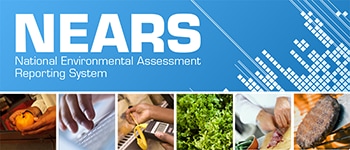Stop Food Outbreaks with Environmental Assessments

Food safety investigators can use environmental assessments to improve food safety. Environmental assessments are an important part of outbreak investigations. They can determine how and why germs got into the environment and spread to make people sick, and they provide information that can stop ongoing outbreaks and prevent them in the future.
Jackie Jones*, a recent university graduate who majored in environmental health, just started a job as the new food safety specialist at Hillside County Health Department. Rick, her manager, seemed happy she was there. “We had a new policy come down from the state that said we had to conduct environmental assessments on all reported outbreaks, but I told my boss that we just don’t have the people to commit to that. I told them if they wanted us to do them, we needed another staff member. And that’s how we got you!”
A few days after Jackie started her job at HCHD, she met with Rick. “Jackie, I want to show you a new program the state signed us up for. It has something to do with those environmental assessments I told you about.”

CDC’s National Environmental Assessment Reporting System (NEARS) is a surveillance system to capture environmental assessment data from foodborne illness outbreak investigations.
Rick went on to show her CDC’s National Environmental Assessment Reporting System (NEARS), a surveillance system to capture environmental assessment data from foodborne illness outbreak investigations. Jackie knew U.S. health departments report epidemiological and laboratory data on foodborne disease outbreaks to NORS; she didn’t know they used NEARS to report environmental assessment data not routinely collected in NORS.
As Jackie studied the information about NEARS, she recognized something from her undergraduate studies—a training called Environmental Assessment Training Series (EATS). She remembered using a few lessons from the training to learn about contributing factors in her food safety course. Eagerly, she finished the training and was surprised at how much she learned.
A few weeks later, Jackie got a call from Rick. “We’ve been asked to join an investigation team for a restaurant outbreak at Dina’s Family Kitchen in town. You’re our food safety expert, so go and see what it’s all about!”
Jackie had been waiting for this moment. After a quick call to the epidemiologist leading the team, Jackie referred to her training notes from EATS to remind her of her role on the investigation team and what she should bring to the site visit. She also printed out the NEARS forms so she didn’t miss important information for reporting to the system. Within the hour, she was off to conduct her first environmental assessment.

Environmental assessments, an important part of outbreak investigations, can determine how and why germs got into the environment and spread to make people sick.
Conducting Environmental Assessments of Outbreaks
Most foodborne outbreaks occur in retail food establishments like restaurants, and environmental assessments are an important part of outbreak investigations. Environmental assessments can determine how and why germs got into the environment and spread to make people sick, and they provide information that can stop ongoing outbreaks and prevent them in the future. It seems like environmental assessments would be standard practice in an outbreak investigation, but health department investigators do not always conduct environmental assessments of outbreaks.
The NCEH Safe Food Section looked at 403 foodborne outbreaks reported to NEARS from 2014-2016 to determine why investigators did or did not do an environmental assessment of restaurant outbreaks. They discovered that investigators needed appropriate resources and managerial support to conduct these assessments; in particular, having departmental policies and the necessary staff and time to do assessments. Additionally, assessments were hindered by a lack of training, poor communication that delayed response time, and uncooperative restaurant staff.
Health department management can support improved food safety practices by
- Encouraging outbreak investigations to include environmental assessments.
- Providing the resources necessary to complete these assessments, including hiring more staff, conducting training, and instituting policies that require environmental assessments.

WFEHSB’s Environmental Health Specialists Network (EHS-Net) seeks to improve public health and industry policies and practices to reduce foodborne illness in restaurants, banquet facilities, schools, and other institutions.
Helping Programs Fill Performance Gaps
NCEH’s Water, Food, and Environmental Health Services Branch (WFEHSB) provides free tools and guidance, training, and research for environmental health practitioners and programs serving states, tribes, localities, and territories. The branch, housed in the NCEH Division of Environmental Health Science and Practice, provides resources to help programs address environmental causes of foodborne illnesses.
WFEHSB’s Environmental Health Specialists Network (EHS-Net) seeks to improve public health and industry policies and practices to reduce foodborne illness in restaurants, banquet facilities, schools, and other institutions. EHS-Net studies have resulted in multiple academic papers, plain language summaries, infographics for health departments and foodservice establishments, and changes to the FDA Food Code.
*Note: This vignette is a fictional account showing how health departments can use WFEHSB’s resources to improve public health.





















.jpg)












No hay comentarios:
Publicar un comentario